Cranial nerve tests are essential for assessing neurological function, involving 12 pairs of nerves controlling sensory, motor, and parasympathetic functions․ This chapter provides a comprehensive guide to understanding and performing these critical examinations, emphasizing clinical relevance and diagnostic accuracy․
1․1 Overview of Cranial Nerves and Their Functions
The 12 pairs of cranial nerves regulate essential functions, including sensory perception, motor control, and parasympathetic activities․ They originate from the brainstem and control processes like vision, hearing, smell, taste, facial movements, and swallowing․ Understanding their specific roles is crucial for accurate neurological assessments and diagnosing disorders affecting these critical pathways․
1․2 Importance of Cranial Nerve Examinations in Clinical Practice
Cranial nerve examinations are vital in clinical practice for diagnosing neurological conditions․ They help identify deficits, localize lesions, and monitor disease progression․ A thorough assessment guides targeted treatments, improving patient outcomes․ These tests are non-invasive and provide critical insights into the functioning of the central and peripheral nervous systems, making them indispensable in modern neurology․

Cranial Nerve I (Olfactory Nerve)
The olfactory nerve (CN I) is responsible for transmitting sensory information related to smell․ Its function is tested by assessing the ability to identify specific odors, with each nostril evaluated separately․
2․1 Testing the Sense of Smell
Testing the sense of smell involves assessing the ability to detect and identify odors․ Each nostril is tested separately using distinct, non-irritating scents․ The patient, eyes closed, identifies the odor source․ This method ensures accurate evaluation of olfactory function, ruling out anosmia or impaired sensory perception․ Proper technique minimizes confounding factors, providing reliable clinical insights into olfactory nerve integrity․
2․2 Clinical Signs of Olfactory Nerve Dysfunction
Clinical signs of olfactory nerve dysfunction include anosmia (loss of smell) or reduced olfactory perception․ Patients may struggle to identify odors or confuse different scents․ These signs suggest potential damage to the olfactory nerve, often due to trauma, infections, or neurological conditions․ Accurate identification of these symptoms is crucial for diagnosing and managing underlying causes effectively․
Cranial Nerve II (Optic Nerve)
Cranial Nerve II, the optic nerve, transmits visual information from the retina to the brain․ Dysfunction may present with vision loss, blurred vision, or visual field defects․
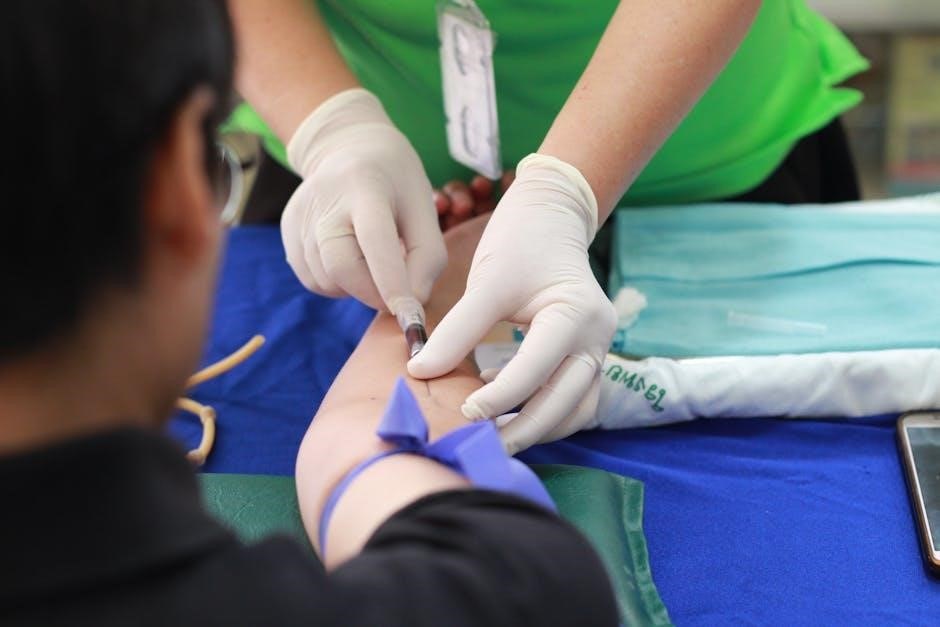
3․1 Visual Acuity Testing Using a Snellen Chart

Visual acuity testing with a Snellen chart assesses the sharpness of vision for each eye separately․ The patient covers one eye and reads letters from 20 feet․ Near vision is also evaluated․ Reduced acuity may indicate optic nerve dysfunction, such as in optic neuritis or other neurological conditions․ This test is crucial for diagnosing visual impairments․
3․2 Pupillary Response Testing (Swinging Flashlight Test)
The swinging flashlight test evaluates pupillary light reflex, assessing cranial nerves II and III․ Shine a light in one eye, then quickly shift to the other, observing pupil constriction․ A normal response shows equal constriction in both eyes․ An afferent defect (e․g․, optic nerve dysfunction) causes reduced constriction when light is shone in the affected eye, aiding in diagnosing neurological conditions․

Cranial Nerves III and IV (Oculomotor and Trochlear Nerves)
Cranial nerves III (oculomotor) and IV (trochlear) control eye movements, eyelid elevation, and pupil responses․ Their examination is crucial for assessing extraocular muscle function and coordination․
4․1 Assessing Eye Movements and Extraocular Muscles
Assessing eye movements involves evaluating the function of cranial nerves III and IV, which control extraocular muscles․ Tests include observing voluntary eye movements, checking for nystagmus, and evaluating alignment using the light reflex and cover tests․ These assessments help identify muscle weakness, paralysis, or coordination issues, aiding in the diagnosis of conditions affecting these nerves․
4․2 Testing for Strabismus (Light Reflex and Cover Tests)
The light reflex test examines pupil constriction and red reflex symmetry, while the cover test detects eye misalignment․ These tests help diagnose strabismus by assessing how eyes move and align․ Abnormal responses may indicate issues with cranial nerves III or VI, guiding further neurological evaluation for conditions like palsy or nerve lesions․

Cranial Nerve V (Trigeminal Nerve)
The trigeminal nerve manages facial sensation and motor functions, including chewing․ It has three branches, and its dysfunction can cause numbness, weakness, or impaired reflexes, indicating potential lesions․
5․1 Evaluating Facial Sensation and Motor Function
Evaluate the trigeminal nerve by assessing facial sensation using light touch or a soft object on all three branches (ophthalmic, maxillary, and mandibular)․ Test motor function by palpating the temporalis and masseter muscles during jaw clenching․ Look for asymmetry, atrophy, or involuntary movements that may indicate nerve damage or dysfunction․
5․2 Clinical Indicators of Trigeminal Nerve Lesions
Clinical signs of trigeminal nerve lesions include unilateral facial numbness, altered sensation, or paresthesia․ Motor weakness may involve the temporalis or masseter muscles, affecting jaw movement․ The corneal reflex may be diminished or absent, and the jaw jerk reflex could be altered․ Lesions can result from trauma, tumors, or vascular issues, requiring thorough neurological evaluation for accurate diagnosis and management․
Cranial Nerve VII (Facial Nerve)
The facial nerve controls facial expressions, taste perception, and some autonomic functions․ Its examination involves assessing muscle strength, symmetry, and clinical signs like weakness or asymmetry, guiding diagnostic evaluations․
6․1 Testing Facial Muscle Strength and Symmetry
Facial muscle strength and symmetry are assessed by observing the patient’s facial expressions and movements․ The examiner instructs the patient to perform actions like smiling, frowning, and pursing lips․ Asymmetry or weakness may indicate facial nerve dysfunction․ Clinical signs such as drooping or difficulty closing the eye can suggest specific nerve impairments, aiding in accurate neurological evaluation and diagnosis․
6․2 Assessing Taste Perception
Taste perception is evaluated by applying sweet, sour, salty, and bitter substances to the patient’s tongue․ The patient identifies each taste, and the examiner compares results bilaterally․ This assessment helps detect facial nerve dysfunction, as impaired taste sensation may indicate nerve damage․ Testing both sides ensures accuracy and aids in diagnosing conditions affecting the facial nerve’s gustatory function․
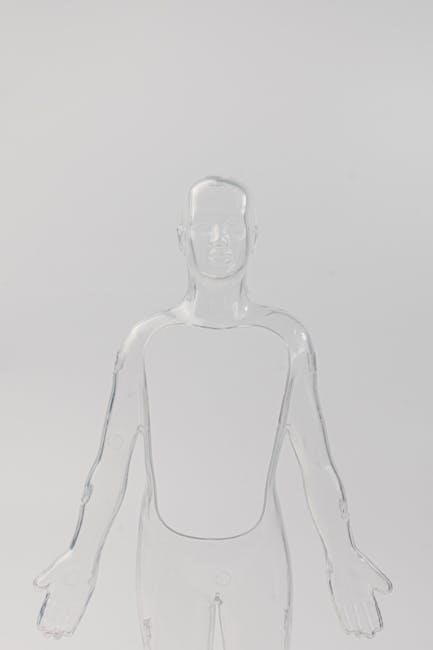
Cranial Nerve VIII (Vestibulocochlear Nerve)
Cranial nerve VIII governs hearing and balance, with tests like Weber and Rinne tuning fork assessments evaluating hearing loss․ Vestibular function is examined using tests like the Hallpike maneuver to detect vertigo or nystagmus, aiding in diagnosing vestibulocochlear nerve dysfunction․
7․1 Hearing Assessment Techniques
Hearing assessment techniques involve pure-tone audiometry, speech recognition tests, and tuning fork tests like Weber and Rinne․ Pure-tone audiometry measures threshold sensitivity, while speech tests evaluate word recognition․ Tuning fork tests differentiate conductive versus sensorineural hearing loss, aiding in diagnosing vestibulocochlear nerve impairments․ These methods provide a comprehensive evaluation of auditory function and guide clinical decision-making․
7․2 Balance and Vestibular Function Tests
Balance and vestibular function are assessed using tests like the Hallpike maneuver, Dix-Hallpike test, and electronystagmography (ENG)․ These evaluations help identify vestibular dysfunction, such as benign paroxysmal positional vertigo (BPPV), by observing nystagmus and vertigo responses․ ENG records eye movements to detect vestibular system abnormalities, aiding in accurate diagnosis and treatment planning for patients with balance disorders․
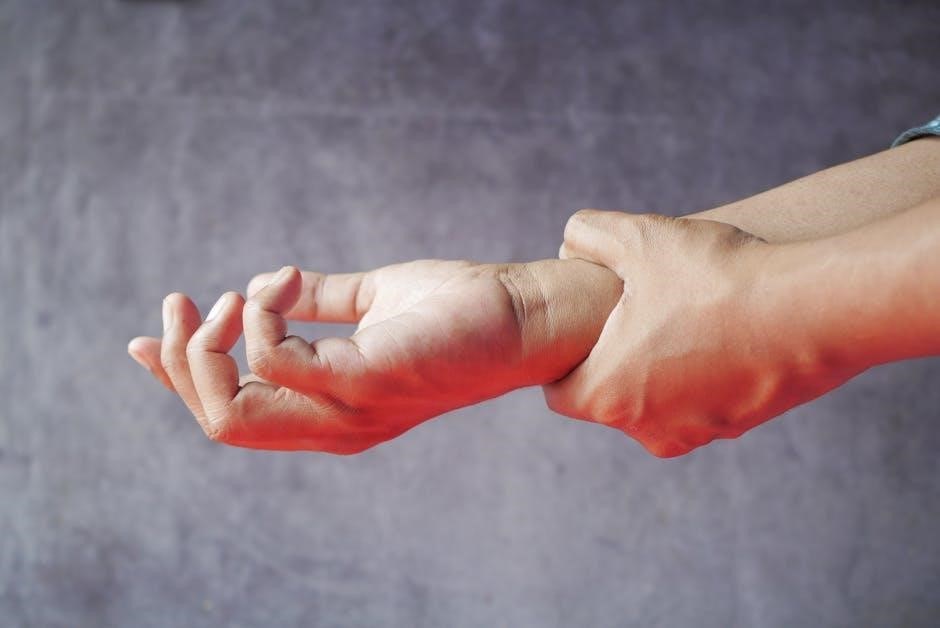
Cranial Nerves IX and X (Glossopharyngeal and Vagus Nerves)
Cranial nerves IX and X control vital functions like swallowing, speech, and sensory input․ Their examination includes assessing the gag reflex, taste perception, and palatal movement to identify potential lesions or dysfunctions affecting these nerves․
8․1 Evaluating the Gag Reflex and Swallowing Function
Evaluating the gag reflex involves stimulating the pharynx to assess the integrity of cranial nerves IX and X; The examiner observes the patient’s response, noting symmetry and strength․ Swallowing function is tested by observing the patient’s ability to move liquids or solids without difficulty․ These tests help identify dysphagia or neurological impairments affecting the glossopharyngeal and vagus nerves․
8․2 Assessing Speech and Palatal Movement
Assessing speech and palatal movement involves evaluating cranial nerves IX and X․ The patient is asked to speak, observing articulation, voice quality, and rhythm․ Palatal movement is tested by asking the patient to say “ah” and observing symmetrical elevation of the soft palate․ Abnormalities may indicate dysarthria or cranial nerve palsies affecting glossopharyngeal or vagus nerve function․
Cranial Nerves XI and XII (Spinal Accessory and Hypoglossal Nerves)
Cranial nerves XI and XII control key motor functions․ The spinal accessory nerve governs neck movements, while the hypoglossal nerve manages tongue mobility and speech articulation․
9․1 Testing Sternocleidomastoid and Trapezius Muscle Function
Assessing the sternocleidomastoid and trapezius muscles involves evaluating strength and movement․ The sternocleidomastoid is tested by having the patient turn their head against resistance, while the trapezius is evaluated through shoulder shrug exercises․ These tests help identify weakness or paralysis, which may indicate spinal accessory nerve dysfunction, guiding further neurological evaluation and diagnosis․
9․2 Assessing Tongue Strength and Mobility
Assess tongue strength and mobility by having the patient protrude their tongue and move it side-to-side; Observe for deviation, tremors, or difficulty in movement․ Test strength by asking the patient to press their tongue against a tongue depressor; Clinical signs such as atrophy or fasciculations may indicate hypoglossal nerve dysfunction, crucial for diagnosing cranial nerve XII impairments․
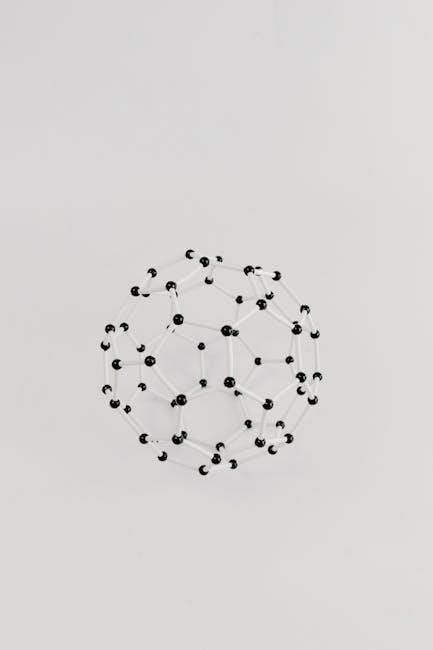
Clinical Interpretation of Cranial Nerve Test Findings
Clinical interpretation involves correlating test results with neurological conditions, identifying lesion locations, and determining the nature of nerve dysfunction to guide further diagnostic and therapeutic interventions․
10․1 Correlating Test Results with Neurological Conditions
Accurate interpretation of cranial nerve test results involves linking abnormalities to specific neurological conditions․ For example, impaired olfactory function may indicate anosmia or frontal lobe pathology, while optic nerve defects could suggest conditions like optic neuritis or tumors․ By correlating findings with clinical history and physical examination, clinicians can identify underlying causes, such as stroke, multiple sclerosis, or nerve compression, guiding further diagnostic and therapeutic interventions․
10․2 Determining the Location and Nature of Cranial Nerve Lesions
Identifying the location and nature of cranial nerve lesions requires a systematic approach․ Lesions can be central, peripheral, or intrinsic, affecting specific nerve pathways․ Clinical findings, such as unilateral weakness or sensory deficits, help localize damage․ Advanced imaging and electrophysiological tests further elucidate the lesion’s extent and cause, distinguishing between conditions like tumors, inflammation, or vascular events, and informing targeted treatment strategies․
Specialized Tests and Techniques
Specialized tests and techniques enhance diagnostic accuracy, including electrophysiological evaluations like nerve conduction studies and electromyography, alongside advanced imaging tools such as MRI and CT scans․
11․1 Electrophysiological Evaluation of Cranial Reflexes
Electrophysiological tests, such as nerve conduction studies and electromyography, are vital for assessing cranial reflexes․ These tools help identify nerve dysfunction, guiding precise diagnoses and treatment plans for conditions like cranial nerve palsy or neuropathy, ensuring accurate clinical outcomes․
11․2 Advanced Imaging and Diagnostic Tools
Advanced imaging techniques like MRI and CT scans provide detailed visualization of cranial nerves, aiding in diagnosing structural abnormalities․ High-resolution MRI is particularly effective for assessing nerve compression or damage․ PET scans and ultrasound may also be used for specific conditions, offering insights into nerve function and surrounding tissue health, enhancing diagnostic accuracy and guiding treatment strategies․
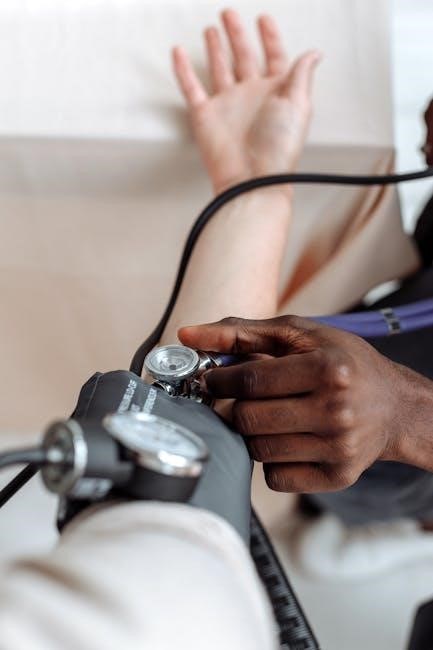
Case Studies and Clinical Applications
Case studies demonstrate the practical application of cranial nerve tests in diagnosing conditions like isolated Trochlear Nerve Palsy, post-traumatic brain injury, and vestibular-related issues, guiding effective management strategies․
12․1 Examples of Cranial Nerve Palsies and Their Management
Cranial nerve palsies, such as isolated Trochlear Nerve Palsy post-traumatic brain injury, highlight the importance of thorough assessment․ Management strategies include tailored rehabilitation, compensatory techniques, and addressing associated symptoms like diplopia or speech difficulties․ Vestibular screening tests and electrophysiological evaluations aid in precise diagnosis, ensuring optimal patient outcomes through targeted interventions․
12․2 Practical Tips for Conducting Cranial Nerve Examinations
Begin with a thorough patient history to guide the examination․ Use standardized tools like Snellen charts for visual acuity and tuning forks for hearing assessments․ Ensure proper patient positioning and minimize distractions․ Test each cranial nerve systematically, starting with less invasive tests․ Document findings meticulously for accurate interpretation and future reference․
Cranial nerve tests remain vital for neurological assessment․ Emerging trends include advanced imaging and electrophysiological tools, enhancing diagnostic accuracy and clinical applications in patient care․
13․1 Summary of Key Concepts
Cranial nerve tests are essential for evaluating neurological function, providing insights into sensory, motor, and autonomic processes․ Each nerve has distinct roles, and systematic testing helps identify pathologies․ Accurate diagnosis relies on correlating clinical findings with patient history and physical examination․ These tests remain a cornerstone in neurology, guiding timely interventions and improving patient outcomes․
13․2 Emerging Trends in Cranial Nerve Testing
Advancements in neurology have introduced innovative methods for cranial nerve assessment, including electrophysiological evaluations and advanced imaging techniques․ New technologies, such as AI-driven diagnostic tools, enhance precision and accessibility․ These emerging trends aim to improve early detection, refine lesion localization, and personalize treatment approaches, ultimately advancing patient care and outcomes in neurological practice․
